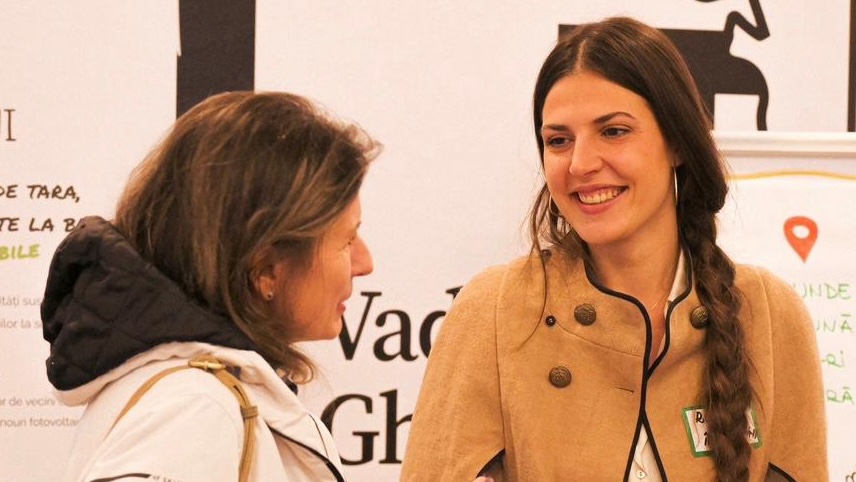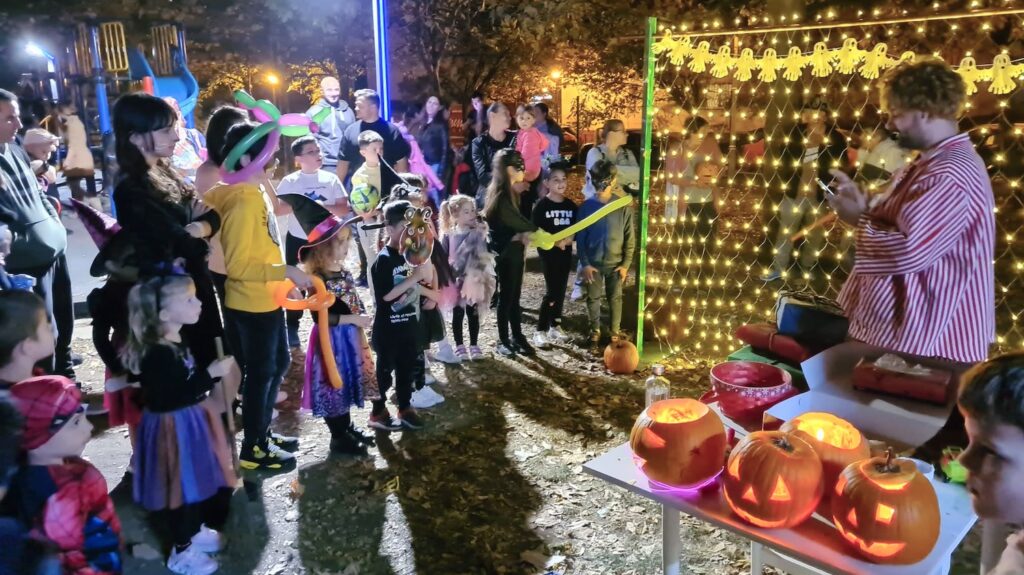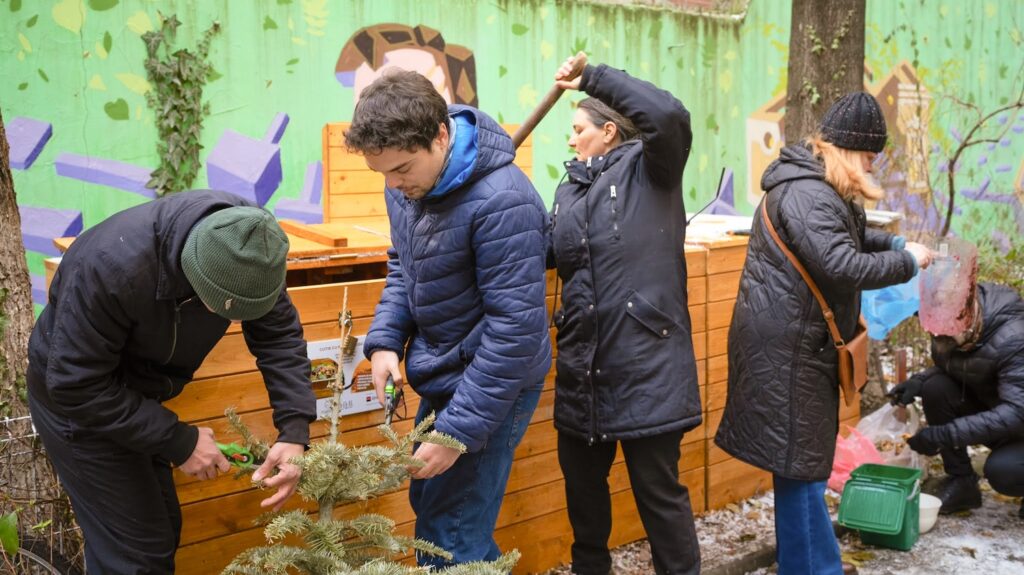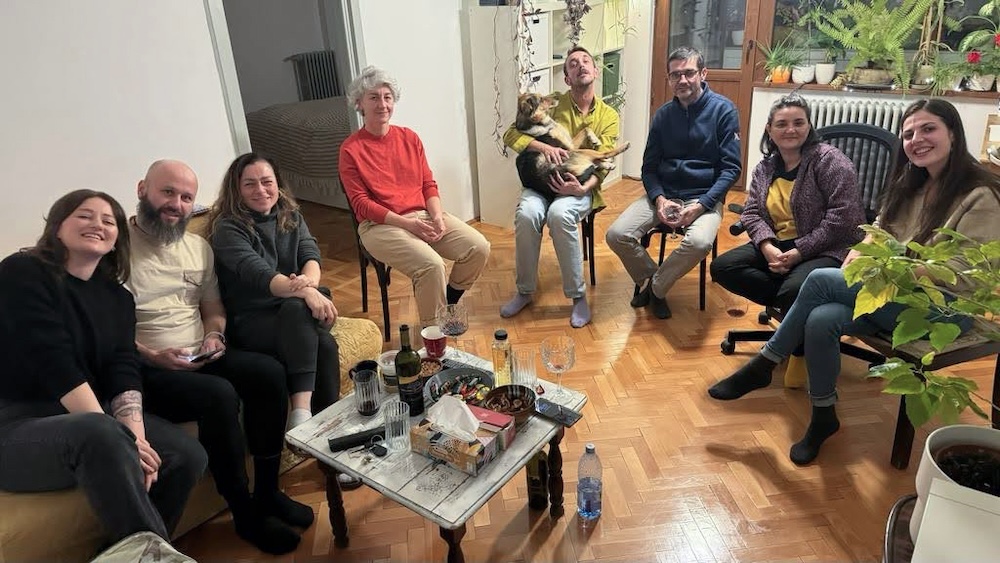NEB ambition
The ultimate ambition of the New European Bauhaus is to achieve transformation. To do this, the NEB Compass has identified specific levels of ambition that outline the desired outcomes for each of the NEB values.
The ultimate ambition of the New European Bauhaus is to achieve transformation. To do this, the NEB Compass has identified specific levels of ambition that outline the desired outcomes for each of the NEB values.
These areas refer to the five key domains of intervention that CrAFt's New European Bauhaus Impact Model considers essential for guiding and evaluating complex urban initiatives.
The participation level refers to the degree or extent to which individuals or groups are actively involved or engaged in a particular activity, project, or process. It assesses the depth of their involvement, contributions, and commitment, ranging from minimal or passive participation to active and dedicated participation.
The New European Bauhaus (NEB) aims to promote the values of sustainability, aesthetics, and inclusion in the design and transformation of urban spaces. It emphasises the integration of environmental, social, and economic considerations to create harmonious and innovative living environments.
According to the Smart City Guidance Package, there are seven stages to plan and implement smart city projects. These stages propose a logical and coherent roadmap for city initiatives involving many stakeholders.
ÎntreVecini—Romanian for “among neighbours”—is a fascinating organisation based in Bucharest. Its ambitious goal is to support the development of 2 million Romanians involved in community projects by 2030. To find out more about the innovative change-making model it is developing, we met Ruxandra Păduraru, one of its project managers.

Ruxandra is a multifaceted woman who loves the sun and enjoys public spaces. During a research exercise, while studying for her bachelor’s in anthropology, she noticed that Bucharest lacks non-commercial public spaces. She also realised the importance of people interaction in shaping urban spaces.
At that time, many of her friends were architects, and she remembers how, in conversations with them, they tended to talk only about buildings. However, in her opinion, the most crucial element of cities is people, not buildings. This view of reality led her to pursue a master’s degree in urban anthropology. Her master’s thesis focused on urban smells in Bucharest and how they influence how we perceive spaces. Her first professional experiences helped her realise that actively engaging with and involving citizens is vital in every project related to spaces and buildings.
One day, while surfing the internet, she bumped into ÎntreVecini and signed up for an event they were organising. When she arrived there, she “saw the yard of the building block: all neighbours were there in the garden, and they had an urban garden where they were growing some tomatoes and some cucumbers, and there were children just gathering around and running, and there were these kinds of improvised seating spaces for everyone”.

She told herself, ” This is the kind of community that will enhance not only my well-being but also my ability to understand that even though we are all very different, and we came from different paths of life, we can still be there together for each other.” After that transformative experience, Ruxandra joined ÎntreVecini as a project manager.
Established in 2019 by Mihai Toader-Pasti out of his desire to change people’s lives in cities, ÎntreVecini’s mission is to create sustainable urban communities, by installing solar photovoltaic panels on apartment blocks and turning their neighbours from mere consumers to prosumers and active participants in their community. They achieve this by organising community interventions around the Sustainable Development Goals (SDGs).
Any neighbours’ community can apply for the programme. They need to demonstrate a desire for change. Those selected communities will receive funding (€15,000), half of which will be allocated for installing photovoltaic panels on the building’s roof. The other half of the budget will be spent on developing the community. BRD Groupe Société Generale, one of Romania’s largest banks, provides project funding but does not have a say in the organisation’s operations.

ÎntreVecini facilitates the process and cooperates with the local communities to organise their activities. Additionally, they educate groups, such as children, older people, and adults, about environmental sustainability and provide guidance on sustainable practices in and around their buildings, like gardening. ÎntreVecini aims to build resilient communities that will continue sustainable activities after the organisation’s involvement ends, generally after one year.
In addition to ÎntreVecini and the communities they work with, various other actors are involved in the process. The term “community” extends beyond just residents of the apartment blocks to include their neighbours, local businesses (such as coffee shops and vintage stores), and other stakeholders in the area.
Partnerships with other organisations are a fundamental part of ÎntreVecini’s work. These partnerships often form organically through social media, the organisation’s website, or outreach to experts and universities. Additionally, the organisation collaborates with universities, such as having teachers and students assist with projects related to urbanism and plant studies. The organisation adapts its methods to suit the specific needs and characteristics of each community, emphasising a flexible and community-centred approach.

ÎntreVecini is refining its method to create and engage with communities, which consists of the following steps:
As one might expect, working with people comes with specific challenges. ÎntreVecini faces a few challenges, such as a lack of trust. In Ruxandra’s experience, many community members are sceptical of the organisation’s motives and process due to negative experiences with other NGOs.
This lack of trust also extends to interpersonal relations among neighbours, even if they have lived in the same apartment block for many years. Overcoming misconceptions, stereotypes, and preconceptions about each other requires fostering opportunities for interaction and relationship-building through community events.

Moreover, convincing community members of the benefits of sustainable activities beyond just financial incentives can be challenging, too. Educating them about the broader advantages of sustainability, such as creating green spaces, supporting biodiversity, and enhancing quality of life, requires patience and effective communication.
Ruxandra highlights the importance of community engagement and transparent communication in overcoming these challenges.
Ruxandra is most proud of the organisation’s impact on inspiring individuals to take action in their own communities. She mentions receiving messages on social media from people who, despite lacking experience in NGOs or community building, express their motivation to implement similar initiatives in their neighbourhoods.

ÎntreVecini provides resources, guides and models for communities to initiate sustainable projects independently. Ruxandra emphasises the importance of empowering people to take ownership of their communities, especially in a context where many Romanians lack meaningful connections with their neighbours.
When asked about ÎntreVecini’s legacy, Ruxandra envisions cities characterised by vibrant energy, where residents are motivated to effect change and advocate for grassroots initiatives. She anticipates a shift towards bottom-up approaches to governance, with communities actively engaging in creating more sustainable and resilient urban environments.
Ruxandra also hopes to see the spark of enthusiasm and hope ignited in the eyes of people across various cities in Romania and well beyond, as ÎntreVecini is planning to expand its activities internationally. Their international branch will be called DearNeighbour, and you can bring the model to your community wherever you are on the globe.
Written by Jose Rodriguez
Fact-checked by Ruxandra Păduraru
Photos by ÎntreVecini